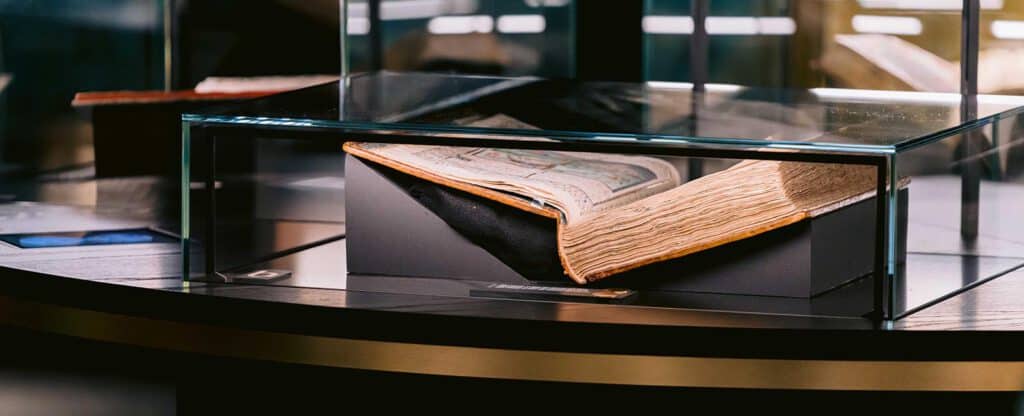Manuscripts can take a beating: the parchment of the books from the Library of the Dukes of Burgundy still looks impeccable after 600 years. As do the miniatures. Yet they have one big enemy: light. Of course, a slight amount of light is indispensable if one wants to exhibit manuscripts. That’s why you’ll find new manuscripts in our showcases every 6 months.
Sturdy but vulnerable
Quite a few of the manuscripts that are on display in the KBR museum have survived looting, fire, waterlogging or vermin. In the museum’s specially designed display cases, they are safe because the temperature and humidity are constantly being monitored. But there is another, creeping danger: exhibiting a medieval manuscript means exposing its miniatures and written text to light, the archenemy of every book.
Light and manuscripts: not the best fit
A manuscript usually consists of materials of natural origin: leather, fabric, wood, parchment, pigments, and dyes. Light rays accelerate the aging of these materials by providing energy for chemical reactions that can damage these materials. Light can, for example, cause the illumination and calligraphy in medieval manuscripts to fade over time. Fortunately, we can control most types of light.
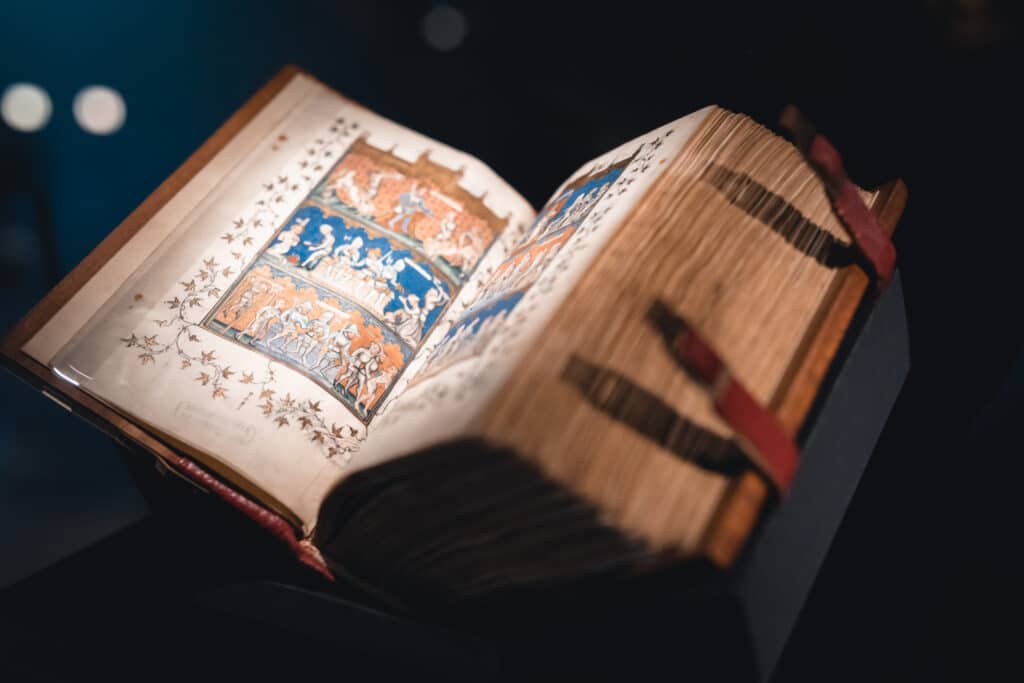
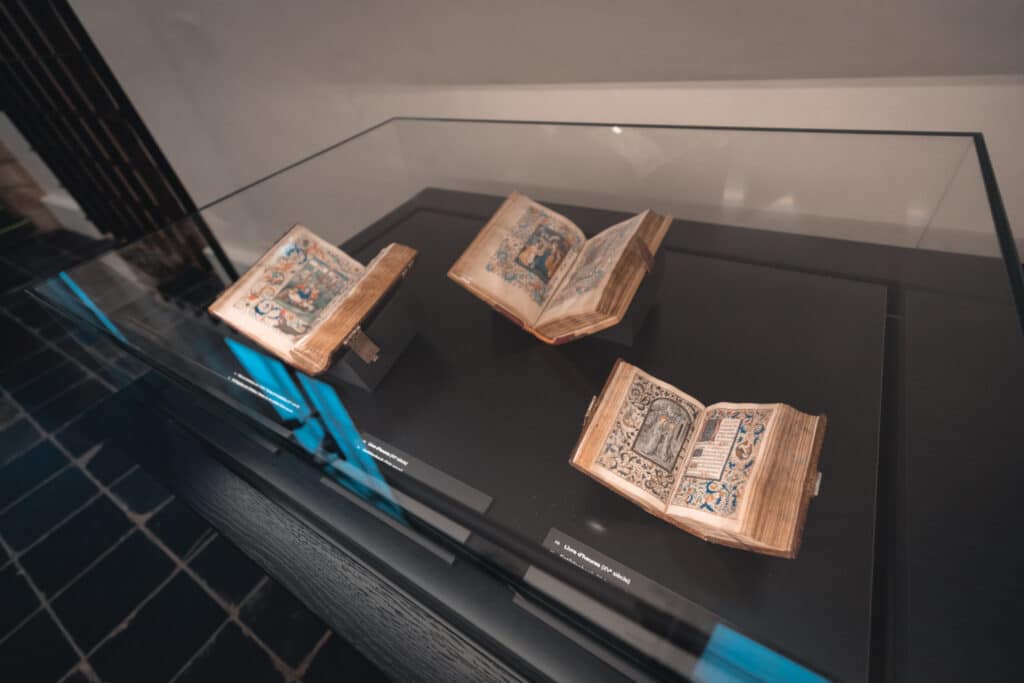
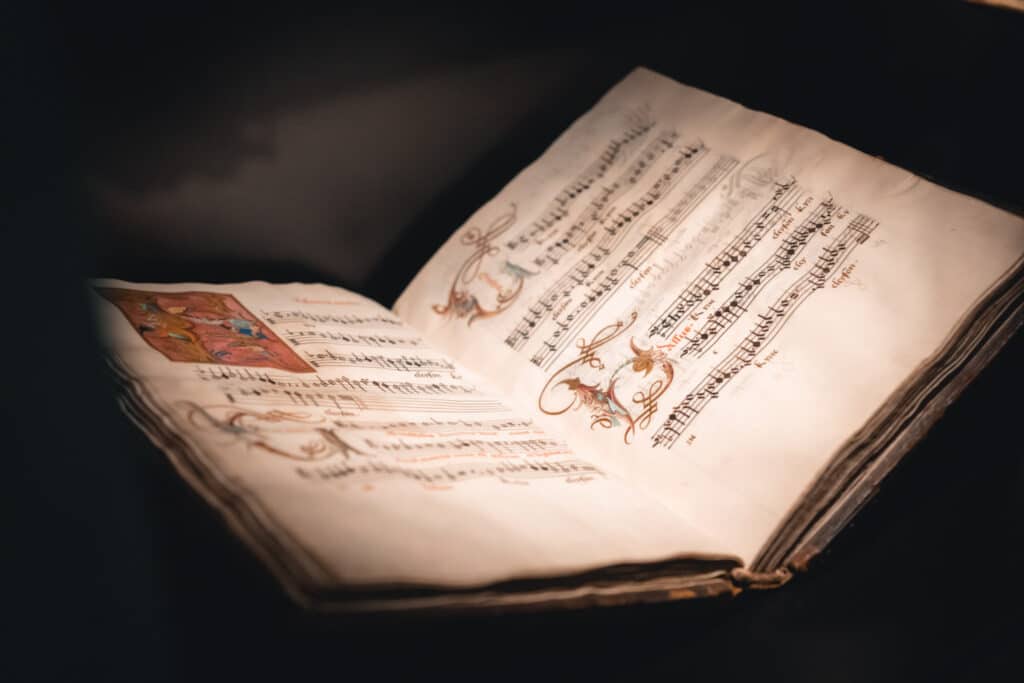
Is all light bad?
Just as for humans, some wavelengths of light are more harmful than others:
- Ultraviolet radiation causes photochemical reactions that can cause the parchment pages in a manuscript to yellow and become brittle.
- Infrared radiation causes heating, which accelerates the chemical and physical breakdown of parchment.
- Radiation from visible light can cause discolorations.
UV and infrared light can be easily avoided in a museum setting, as you don’t need them to visually observe a manuscript or miniature. Visible light, however, is essential. Indeed, without this kind of light, you see… nothing at all.
“Molecules are the fundamental chemical components of all materials. They are constantly in motion. When light radiation comes into contact with matter, the energy of this radiation can be absorbed, dispersed or reflected depending on the specific properties of the matter. At the molecular level, electronic and vibrational processes that depend on the structure of the molecules themselves are induced. This is what allows us to perceive objects and their colors. If this energy is too strong, it can cause the rupture of bonds within the molecule, and thus modify its structure. This results in irreversible alterations of colors and materials.”
– Tatiana Gersten, restorer KBR
How does KBR protect manuscripts from light?
To safely exhibit our manuscript collection, we keep light levels very low:
- The LED lighting in the KBR museum is set at 50 lux, which is the minimum level of lighting needed to perceive the details in miniatures with the naked eye.
- Only LED light is used in the museum: a light source without infrared and ultraviolet radiation. The natural light that enters the museum space is also severely restricted, because it contains ultraviolet and infrared radiation and also has variable light levels, which are difficult to control.
- We regularly change the folios and manuscripts on display. Based on the total dose of light exposure, one can calculate how long a folio can be exposed to light and how long it should rest afterwards. The math is simple: you must consider the amount of light and the duration of exposure.
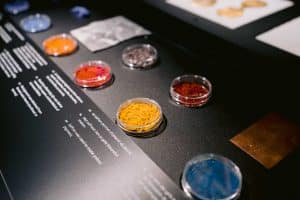
6 months of light, 6 years of rest
According to internationally accepted standards, parchment can be exposed to light for a maximum of 12,500 lux hours per year without suffering any damage.
In the museum, the manuscripts are exposed to 50 lux for an average of 9 hours a day, which means that after a month they will reach the annual maximum quota. To give everyone a chance to discover the beautiful manuscripts of the Library of the Dukes of Burgundy, we choose to show the manuscripts to the public for 6 months. Afterwards, they will be stored in the dark for 6 years, to rest. By respecting these standards, the exhibition of manuscripts does not jeopardize their conservation.

